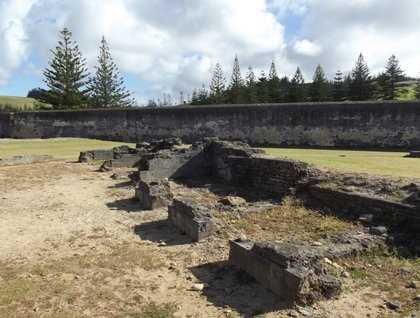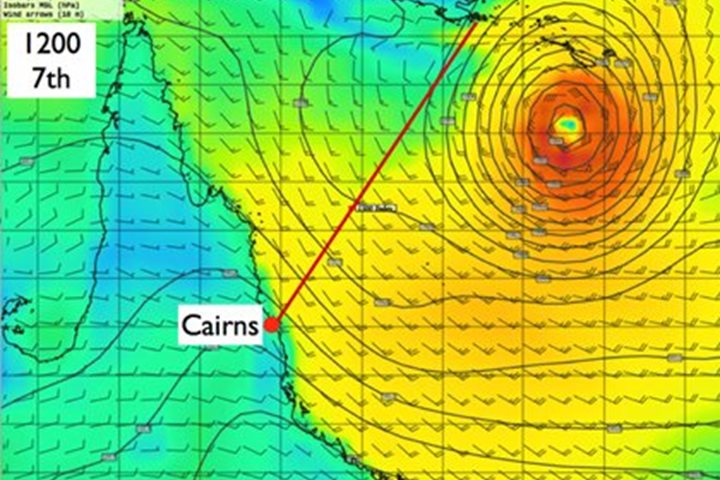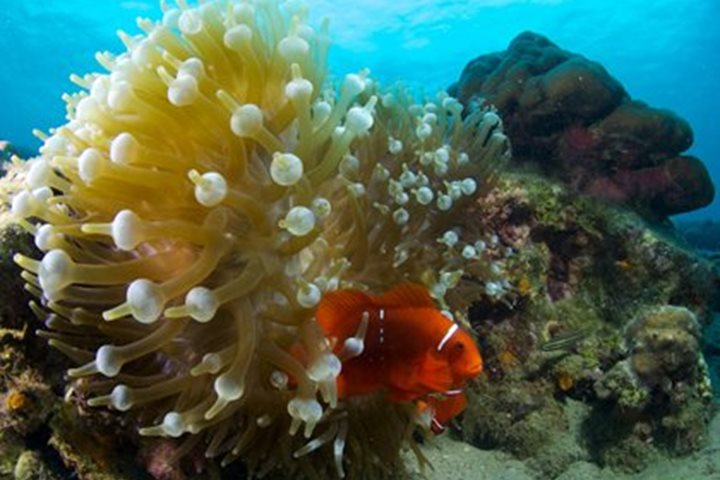Early this morning, we awoke to masses of birds welcoming our vessel as we approached Norfolk Island. Masked boobies, white terns, black noddies, red-tailed tropic birds, wedge-tailed shearwaters, black-winged petrels, and others escorted us the last distance to the anchorage site off the southern harbor known as Kingston. The island is an ancient volcano and appeared quite mysterious as it was partly obscured by the salt spray haze generated by a heavy swell breaking on the cliffs and fringing reef.
Today, Norfolk Island looks very different compared to when Captain Cook aboard Resolution discovered it in 1774. He described the dense forests of Norfolk Island pines and surmised the trees would be ideal for use as ships’ masts and spars, as well as lumber. A few years later, a small colony was established here to process the ‘pines’ and grow flax for the production of cordage and fiber. The first colonizers were prisoners who built the notorious penal colony at Kingston Harbour and began harvesting the Norfolk pines. However, the trees soon proved unsuitable for ship supplies as the wood is too flexible and brittle for use as masts and not nearly as good as other woods for plank and deck works.
We landed at Kingston right after breakfast, with near perfect conditions, and had a chance to visit the ruins of the stone buildings which housed the prisoners. The locals told us horrific stories of the utterly inhumane treatment the convicts suffered under during the late 18th century and first half of the 19th century. When the prison was shut down in 1855, the site was given over for settlement to the growing population of Pitcairn Islanders - the descendants of the famous mutiny on the Bounty. They moved into many of the abandoned buildings and their progeny make up a significant portion of the population of 2,300 people who reside on Norfolk today.
Local guides gave us all a tour of the island, and about half of our group also opted for a long hike on a nature trail in the Norfolk National Park. The hike took us through a dense forest composed of Norfolk Island pines, of course, as well as endemic tree ferns (the world’s tallest), endemic palms, Ti trees (also known as cabbage trees), and many other species of trees and shrubs, and then coursed along the coastline for views of steep embankments, cliffs, and offshore islands. Most of the endemic land birds were sighted by the keen birdwatchers during the hike. Everyone had the option to enjoy a little free time in the main settlement of Burnt Pine located in the center of the island before returning to the landing in time to reboard the ship for lunch.
As we sailed away, the captain took a turn around Phillip Island a short distance off the south end of Norfolk Island, so we could enjoy more beautiful scenery and be entertained by flocks of masked boobies diving for fish before heading northward for Vanuatu, our destination in two days.







